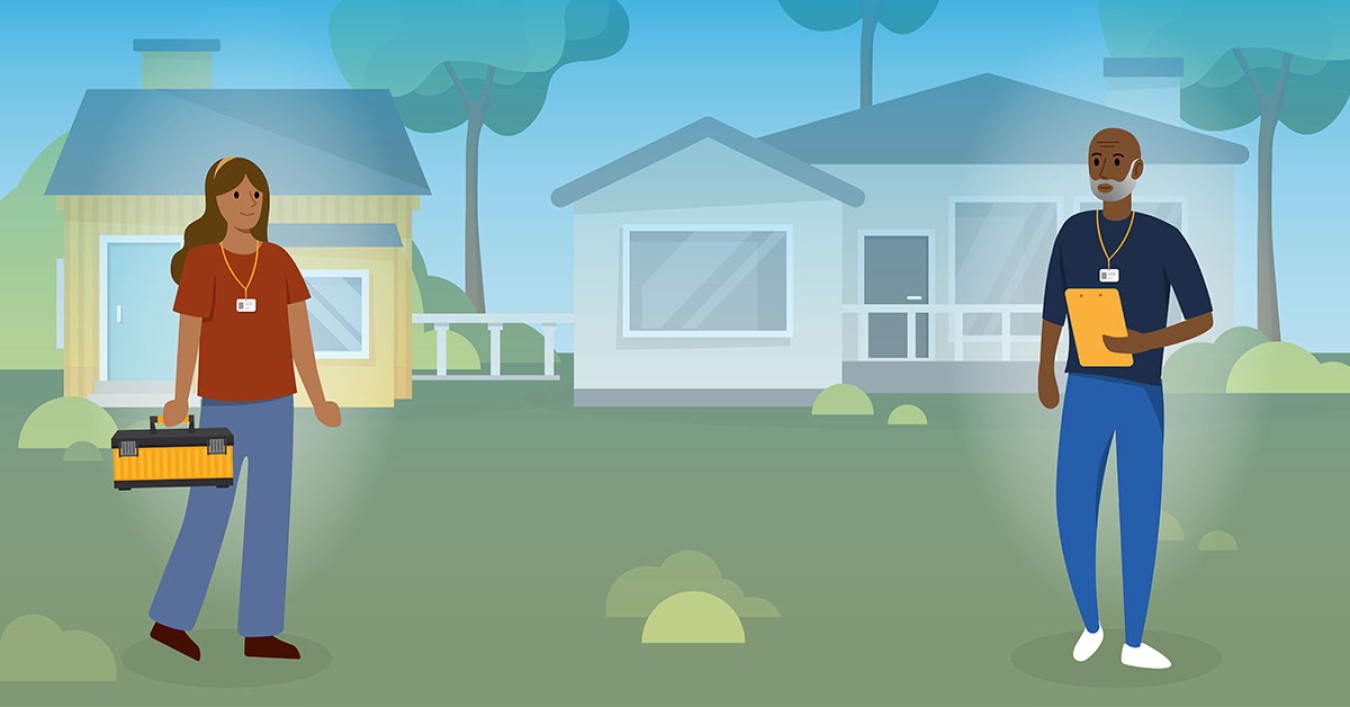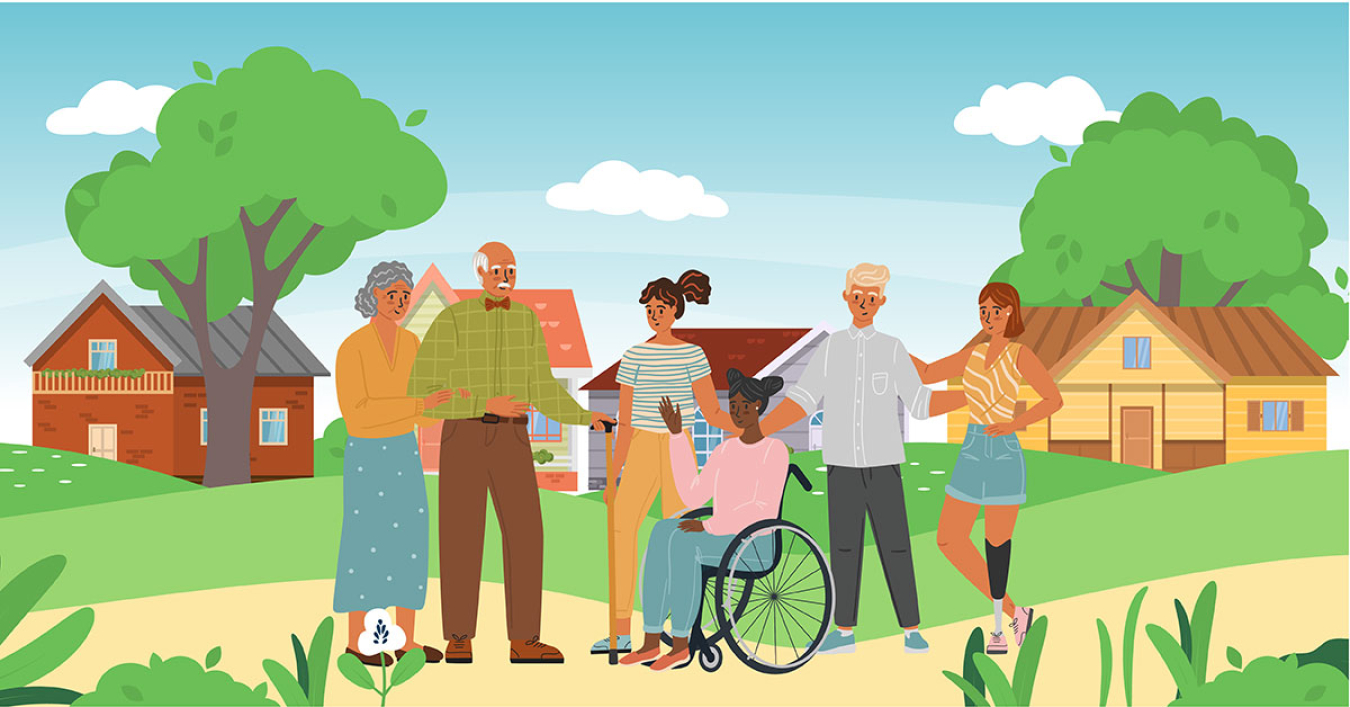Since 2015, Alaska has received $18.1 million from the Weatherization Assistance Program (WAP) and $4.1 million from the State Energy Program (SEP), resulting in the following benefits:

1,444 Homes Weatherized
Alaska reduced energy costs and improved health and safety in 1,444 homes.*

327 Jobs Created or Retained
The State Energy Program creates or retains one job for every $12,500 invested.*

Connected with 15,181 People About Energy Efficiency Installations
Alaska held 454 workshops, webinars, trainings, or outreach events since 2015.*
* Findings from a National Evaluation of the State Energy Program and a National Evaluation of the Weatherization Assistance Program.
States report outcomes of State Energy Program and Weatherization Assistance Program formula (annual) fund activities to DOE on a quarterly basis. The metrics above are outcomes of formula-funded activities since 2015.
The SCEP Project Map highlights the annual formula and competitive funding for WAP and SEP.
Alaska's State Energy Program at Work
Technical Assistance and Energy Education
Education and stakeholder engagement for rural community energy planning and energy efficiency are key elements of the Alaska Energy Authority's (AEA) public engagement and outreach efforts. AEA is responsible for administering and executing SEP-funded projects. During the last plan year, AEA’s team provided energy efficiency planning, technical assistance, and public education to over 60 rural communities throughout the state. This work is coordinated with the state-funded Village Energy Efficiency Program, which provides energy efficiency upgrades to community buildings in rural Alaska.
AEA is also a longstanding member of the Power Pledge Challenge, an annual competition that educates students in grade school about energy and conservation. Approximately 3,000 students participate in the program each year.
AEA's SEP partner, Alaska Housing Finance Corporation (AHFC), also promotes efficiency. AK EnergySmart is a free curriculum resource that educates Alaskans on the high economic and environmental costs of power generation. It also emphasizes the importance of conserving energy at home and at school. Created in 2011, this program focuses on Alaskan youth and has increased in popularity and participation yearly. In 2023, AHFC expanded AKES to include adult education, which will be available in September 2023 using the Canvas platform for on-demand classes. As presenters gain experience and knowledge of energy topics, lessons are continuously updated.
Training Energy Raters and Inspectors Across Alaska
Following a recent earthquake near Anchorage, AHFC identified a potential knowledge gap among new home construction inspectors. With the support of SEP, AHFC is coordinating training with the International Code Council by developing courses specific to it. AHFC is continuously updating a robust training program for home inspectors and new energy raters. In addition, it is adding additional workforce development training for current raters.
Building Monitoring and Data Management
AHFC has been monitoring building energy consumption throughout the state since 2013. They have been collecting and storing/managing data to help facility owners understand utility usage, recognize potential savings, and promote efficiency. A secondary database AHFC manages is a storehouse for all energy ratings in Alaska. It also contains benchmark data for all state-owned facilities, all the data generated by the Weatherization Assistance Program, and calculators for appraisers and realtors to use in assessing the value of energy efficiency in home sales. This database is essential to the development of future efficiency programs in Alaska.
Electric Vehicles
AEA was named the lead agency by the governor to receive and oversee $8.125 million in Volkswagen Settlement funds. AEA's work with the settlement has opened the door to electric vehicles and the need for organized infrastructure. With SEP funds, AEA has installed three Level 2 charging stations at state-owned facilities available to the public, with more installations planned over the next year. To support these goals, AEA formed a working group, including utilities located on the Railbelt, as well as with the Copper Valley Electric Association. In addition, AEA included some island communities, such as Cordova and Juneau. A notable development is the recent release of a request for applications to install Level 3 DC Fast Charging stations along the road system.
Under that solicitation, nine sites were awarded grants:
- Seward Chamber of Commerce (Seward)
- AJ's Old Town Steakhouse & Tavern (Homer)
- Custom Seafoods (Soldotna)
- Grizzly Ridge Lodge (Cooper Landing)
- Dimond Center (Anchorage)
- Three Bears Alaska (Chugiak, Healy, Trapper Creek)
- Jack River Inn (Cantwell)
Learn more about SEP competitively awarded projects.
Alaska's Weatherization Assistance Program at Work
AHFC is the managing agency of Alaska's Weatherization Assistance Program. The Alaska WAP contracts with 11 entities including one community action agency, two nonprofits, and nine native regional housing authorities, to install weatherization improvements in low-income households across the state. The three agencies that administer DOE WAP funds include Interior Weatherization, RurAL CAP, and Alaska Community Development Corporation.
Alaska's extreme winter climate makes residential electricity cost 60% more than the United States on average. Fuel costs in rural and remote communities can be double, triple, or more than costs in Anchorage and Fairbanks. Three agencies administer WAP in combination with other state funds and can provide significant savings and improved health environments in homes throughout the state.
In Program Year (PY) 2021, Alaska weatherized a total of 226 homes with DOE and/or state funds. In PY 2022, 203 homes were weatherized. Production was slowed considerable during this time due to supply chain delays and workforce shortages. Our state funds have also been reduced over the last several years impacting our final numbers.
Between 2010 and 2023, Alaska weatherized an average of 220 homes per year with formula funds.
Success Stories
Read other SCEP News and Success Stories.
Alaska Takes Initiative
Better Buildings Initiative
More than 900 organizations are involved in the Better Buildings Initiative working to reduce energy and water waste and modernize the nation’s buildings and industrial facilities. Download the 2023 Better Buildings Progress Report for more information on the Initiative as a whole.
Better Buildings Accelerators
In the past five years, SCEP has engaged nearly 100 partners in Better Buildings Accelerators. These Accelerators are designed to demonstrate specific innovative policies and approaches, which will accelerate investment in energy efficiency upon successful demonstration. Each Accelerator is a targeted, short-term, partner-focused activity designed to address persistent barriers that stand in the way of greater efficiency.
To learn more about other Better Buildings partners and solutions in Alaska and other states involved in the Better Buildings Initiative, check out the Better Buildings Partner map.
Outdoor Lighting Accelerator Partners
The city of Anchorage, a partner in the Outdoor Lighting Accelerator (OLA) from 2014-2016, pledged to upgrade its streetlights as a part of a nationwide commitment to retrofit 1.3 million light poles with high performance lighting. These commitments are expected to result in annual savings of $48 million. See the Outdoor Lighting Toolkit for more information and demonstrated best practices.
Remote Alaska Community Energy Efficiency Competition
The Remote Alaska Community Energy Efficiency Competition (RACEE Competition) is a joint collaboration of EERE, DOE's Office of Indian Energy Policy and Programs, and the Alaska Energy Authority.
The RACEE Competition's goal is to empower Alaska communities and Alaska Native villages to develop effective tools to advance the use of reliable, affordable, and energy efficient solutions that are replicable throughout Alaska and other arctic regions. The RACEE Competition was the primary DOE deliverable to the Arctic Executive Steering Committee as part of the National Strategy for the Arctic Region (NSAR).
DOE implemented the RACEE Competition with a Request for Information to gather information related to community energy needs, implementation challenges, partnership needs, competition design, and data collection. This was followed by a three-phased approach:
- Phase 1–Pledges: Sixty-four remote Alaska communities and native Alaska villages pledged to reduce energy use 15% (per capita) by 2020, and gain access to a peer network.
- Phase 2–Technical Assistance: Thirteen communities received technical assistance engagements to gather baseline energy data and develop plans to implement energy efficiency improvements.
- Phase 3–Implementation and Peer Exchange: Seven communities are working to implement energy efficiency projects through cooperative agreements. They are Port Lions, Klawock, Holy Cross, Ruby, Kiana, Galena, Noorvik.
For information on the Competition, please see the RACEE website.
Publications, Resources, Helpful Links
- State and Local Solution Center, a one-stop shop of impactful public-sector resources
- Weatherization Assistance Program
- State Energy Program
- NASEO State Energy Office Contact
- Contact State Weatherization Agency
- EIA Alaska State Profile and Energy Estimates
- DOE's Remote Alaskan Communities Energy Efficiency (RACEE) Competition
